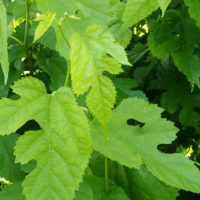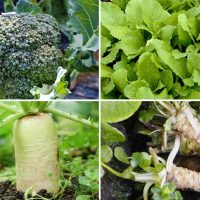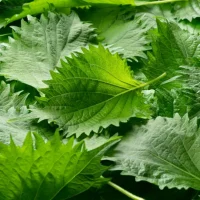オタネニンジンの成分分析|オタネニンジンと高麗人参の違い|機能性成分の特徴について

ウコギ科オタネニンジン(Panax ginseng C.A. Meyer)は、二千年以上の歴史を有する薬用植物であり、健康増進や疾病予防に役割を果たしてきました。本記事では、オタネニンジンの成分分析を通じて、機能性成分の特徴を解説し、オタネニンジンの多面的な魅力を紹介します。
重要なポイント
- ① オタネニンジンの基本知識と歴史的背景
- ② オタネニンジンと高麗人参の違い
- ③ ジンセノサイド類の機能性
- ④ ジンセノサイド類の分析方法
①オタネニンジンの基本知識と歴史的背景
オタネニンジンはウコギ科の多年生植物で、学名は、「Panax ginseng C.A. Meyer」です。乾燥した根部は薬用人参、朝鮮人参、高麗人参などと呼ばれています。生薬としては、細根を除いた根又はこれを軽く湯通ししたものをニンジン(人参)と呼び、根を蒸したものをコウジン(紅参)と呼びます。
オタネニンジンは、日本の伝統医学である漢方医学において、生薬として用いられています。歴史的には、日本に伝来したのは奈良時代で、江戸時代になって栽培されるようになりました。栽培技術や利用法は、時代の変遷に伴い進化を遂げてきました。
1.オタネニンジンの語源と定義
日本では古くから朝鮮人参と呼ばれてきました。現代では輸入品を高麗人参と呼称することが一般的です。「オタネニンジン」の「オタネ」は「御種」を意味します。ニンジンは「人参」と漢字で書かれ、形状が人の形に似ていることから名付けられたのです。江戸幕府に対馬藩から人参の種子(または生根)が献上され、幕府の植物園で栽培が成功しました。その後、幕府から各藩に種子が分け与えられたことから、「御」をつけて「御種人参」と名づけられたといわれています。
2.日本における栽培の歴史
日本におけるニンジン栽培は、江戸時代に始まりました。初期には輸入品に依存していましたが、国内需要の増加により、各地で栽培が拡大されました。特に寒冷地での栽培に適していたため、東北地方(具体的な県名を記載予定)福島県での栽培が盛んになりました。現在でも、長野県東信地方、島根県大根島、福島県会津地域で栽培されています。しかし、オタネニンジンの栽培戸数は著しく減少しています。
オタネニンジンは、漢方医学において気力を補うことを意味する「補気」の代表的な生薬として認識されています。気力を高め、疲労回復や免疫力向上に効果があるとされており、多くの漢方処方に使用されてきました。現代においても、オタネニンジンは健康食品や医薬品の原料として広く利用されています(①-1、①-2)。
②オタネニンジンと高麗人参の違い
オタネニンジン、高麗人参、朝鮮人参は、呼称が異なるだけで同じ植物です。しかし、栽培地が異なることから、機能性成分の種類と含量が異なり、効能にも違いがあると考えられています。これらの違いを把握することで、より深くオタネニンジンを理解することが可能になります。
高麗人参は、韓国や中国で栽培される人参の総称です。一方、オタネニンジンは、日本で栽培される人参です。栽培地域の違いにより、機能性成分に違いがあることが知られています。
オタネニンジン、高麗人参は、サポニンを豊富に含んでおり、トリテルペン配糖体のジンセノサイド類が特徴的に含まれています。ジンセノシド類は、分子基本骨格によって分類され、プロトパナキサジオール系、プロトパナキサトリオール系、オレアナン系などに分類され、それぞれの系統で側鎖が異なり多くの種類が存在します(②-1、②-2、②-3、②-4)。
オタネニンジン(高麗人参・朝鮮人参)の生産地別の主なジンセノサイドは下表のようになります(②-5)。
表 生産地別のジンセノサイド
| 生産地 | 主なジンセノサイド |
|---|---|
| 日本産 | ジンセノサイドRb1、Rb2、Rc |
| 韓国産 | ジンセノサイドRa1、Ra2、Ra3、Rk1 |
| 中国産 | ジンセノサイドR0 |
次節では、ジンセノサイドの機能性についてより詳しく見ていきましょう。
③ジンセノサイド類の機能性
オタネニンジンと高麗人参の機能性については、ジンセノサイド類以外の化合物についても研究されていますが、ここでは、ジンセノサイド類の機能性についてのみ取り上げています。
| 化合物名 | 系統名 | 機能性 |
|---|---|---|
| ジンセノサイド Rb1 | プロトパナキサジオール系 | 抗炎症作用(③-1)、神経保護作用(③-2、 ③-3、 ③-4)、抗うつ作用(③-5、③-6、③-7)、メラニン生成阻害作用(③-8)、抗老化作用(③-9) |
| ジンセノサイド Rb2 | プロトパナキサジオール系 | 免疫賦活作用(③-10) |
| ジンセノサイド Rc | プロトパナキサジオール系 | 心筋保護作用(③-11)、抗炎症作用(③-12) |
| ジンセノサイド Ra1 | プロトパナキサジオール系 | タンパク質チロシンキナーゼ ( PTK ) の活性化を阻害(③-13) |
| ジンセノサイド Rk1 | プロトパナキサジオール系 | 美白作用(③-14)、抗肥満作用(③-15)、インスリン抵抗性改善作用(③-16)、抗腫瘍活性(③-17、③-18) |
| ジンセノサイド R0 | オレアナン系 | 抗炎症活性(③-19、③-20、③-21)、抗腫瘍活性(③-22)、抗 AGA 作用(③-23) |
④ジンセノサイド類の分析方法
ジンセノサイド類の分析には、一般的にHPLC法が採用されています。ジンセノサイド類は構造が類似している化合物が多く、HPLCカラムでの分離が非常に難しいことがあります。また、ジンセノサイド類を検出する検出器も様々で、UV(④-1、④-2)、ELSD(④-3)、MS(④-4)、MS/MS(④-5、④-6)、などが用いられています。
| 測定方法 | 検出感度 | 化合物に対する選択性 | 分析コスト |
|---|---|---|---|
| HPLC-UV | + | + | + |
| HPLC-ELSD | ++ | + | ++ |
| HPLC-MS | +++ | ++ | +++ |
| HPLC-MS/MS | ++++ | +++ | +++++ |
HPLC-UVは、UV検出器の波長を200-210nmという低波長側で測定するため、ベースラインの影響を受け、検出感度はあまり高くありません。また、化合物に対する選択制も高くありませんので、グラジエントの条件によっては、測定対象以外のピークを誤認識するリスクもあります。HPLC-ELSDでは、ベースラインの影響を受けませんので、検出感度はHPLC-UVより同程度または少し高くなります。ただ、ELSDを所有しているところが少ないため、あまり普及していない方法といえます。
HPLC-MSについては、測定対象の化合物をイオン化して、その分子量を検出しますので化合物に対する選択性は高くなります。MSは分子量を測定する機器になりますので機器が高額になります。このため、HPLC-UVに比べて分析コストが高くなります。HPLC-MS/MSについては、化合物をイオン化するところまではHPLC-MSと同じです。一般的にMS/MSではイオン化した後、コリジョンガスなどによって分子を壊して、その壊れたイオンも検出します。このため、化合物に対する選択性が非常に高くなります。MS/MSはMSよりもさらに高額な機器になりますので、分析コストはさらに高くなります。MSとMS/MSに共通していえる問題点は、イオンサプレッションなどの問題があり、定量精度の検討が必要になります。
参考文献
①オタネニンジンの基本知識と歴史的背景
- ①-1 薬用作物栽培の手引き~薬用作物の国内生産拡大に向けた技術の開発~
国立研究開発法人農業・食品産業技術総合研究機構 薬用作物栽培の手引き(オタネニンジン編). 2021年. - ①-2 地域特産作物(工芸作物 、薬用作物及び和紙原料等)に関する資料(令和3年産)
公益財団法人日本特産農産物協会. 2023年.
②オタネニンジンと高麗人参の違い
- ②-1 Advances in Saponin Diversity of Panax ginseng.
Molecules, 2020, 25, 3452-3569. - ②-2 Two new dammarane-type saponins from radix and rhizomes of Panax ginseng C. A. Meyer,
Natural Product Research, 2022, DOI: 10.1080/14786419.2022.2150848 - ②-3 Discrepancy Study of the Chemical Constituents of Panax ginseng from Different Growth Environments with UPLC-MS-Based Metabolomics Strategy.
Molecules. 2023, 28, 2928-. - ②-4 Characterization of Ginsenosides from the Root of Panax ginseng by Integrating Untargeted Metabolites Using UPLC-Triple TOF-MS.
Molecules. 2023, 28, 2068-. - ②-5 Integration of multiplatform metabolomics and multivariate analysis for geographical origin discrimination of Panax ginseng.
Food Res. Int. 2022, 159, 111610.
③ジンセノサイド類の機能性
- ③-1 Ginsenoside Rb1 exerts therapeutic effects on ulcerative colitis through regulating the Nrf2/PIP2/NLRP3 inflammasome signaling pathway.
J. Funct. Foods. 2023, 102, 105475. - ③-2 Neuroprotective Effects of Ginseng Total Saponin and Ginsenosides Rb1 and Rg1 on Spinal Cord Neurons in Vitro.
Exp. Neurol. 2002, 173, 224-234. - ③-3 Ginsenosides Rb1 and Rg3 protect cultured rat cortical cells from glutamate-induced neurodegeneration.
Neurosci. Res. 1998, 53, 426-432. - ③-4 Suppression of local inflammation contributes to the neuroprotective effect of ginsenoside Rb1 in rats with cerebral ischemia.
Neurosci. 2012, 202, 342-351. - ③-5 Monoaminergic and aminoacidergic receptors are involved in the antidepressant-like effect of ginsenoside Rb1 in mouse hippocampus (CA3) and prefrontal cortex.
Brain Research. 2018, 1699, 44-53. - ③-6 Rb1, the Primary Active Ingredient in Panax ginseng C.A. Meyer, Exerts Antidepressant-Like Effects via the BDNF-Trkb-CREB Pathway.
Frontiers in Pharmacology. 2019, 10, 1034. - ③-7 Involvement of serotonergic, noradrenergic and dopaminergic systems in the antidepressant-like effect of ginsenoside Rb1, a major active ingredient of Panax ginseng C.A. Meyer.
J. Ethnopharmacol. 2017, 204, 118-124. - ③-8 The Melanogenesis Inhibitory Effect and the Percutaneous Formulation of Ginsenoside Rb1.
AAPS PharmSciTech. 2014, 15, 1252-1262. - ③-9 Ginsenoside Rb1 retards aging process by regulating cell cycle, apoptotic pathway and metabolism of aging mice.
J. Ethnopharmacol. 2020, 255, 112746. - ③-10 Immunomodulatory Effect of Ginsenoside Rb2 Against Cyclophosphamide-Induced Immunosuppression in Mice.
Front Pharmacol. 2022, 13, 927087. - ③-11 Ginsenoside Rc attenuates myocardial ischaemic injury through antioxidative and antiinflammatory effects.
Pharm Biol. 2022, 60, 1038-1046. - ③-12 Ginsenoside Rc from Korean Red Ginseng (Panax ginseng C.A. Meyer) Attenuates Inflammatory Symptoms of Gastritis, Hepatitis and Arthritis.
The American Journal of Chinese Medicine. 2016, 44, 595-615. - ③-13 The inhibitory effects of ginsenosides on protein tyrosine kinase activated by hypoxia/reoxygenation in cultured human umbilical vein endothelial cells.
Planta Med. 2001, 67, 19-23. - ③-14 Ginsenosides Rg5 and Rk1, the skin whitening agents in black ginseng.
J. Funct. Foods. 2018, 45, 67-74. - ③-15 Ginsenoside Rg5: Rk1 Exerts an Antiobesity Effect on 3T3 L1 Cell Line by the Downregulation of PPARγ and CEBPα.
Iran J Biotechnol. 2017, 15, 252-259. - ③-16 Melioration of insulin resistance by Rk1 + Rg5 complex under endoplasmic reticulum stress conditions.
Pharmacognosy Res. 2014, 6, 292–296. - ③-17 Anti-breast cancer activity of Fine Black ginseng (Panax ginseng Meyer) and ginsenoside Rg5.
J. Ginseng Res. 2015, 39, 125-134. - ③-18 Anti-tumor Activity of the Ginsenoside Rk1 in Human Hepatocellular Carcinoma Cells through Inhibition of Telomerase Activity and Induction of Apoptosis.
Bio. Pharm. Bull. 2008, 31, 826-830. - ③-19 Ginsenoside Ro, an oleanolic saponin of Panax ginseng, exerts anti-inflammatory effect by direct inhibiting toll-like receptor 4 signaling pathway.
J. Ginseng Res. 2002, 46, 156-166. - ③-20 Anti Inflammatory Activity of Ginsenoside Ro.
Planta Med. 1990, 56, 19-23. - ③-21 Ginsenoside Ro suppresses interleukin-1β-induced apoptosis and inflammation in rat chondrocytes by inhibiting NF-κB.
Chin. J. Nat. Med. 2015, 13, 283-289. - ③-22 Inhibitory Effects of Ginsenoside Ro on the Growth of B16F10 Melanoma via Its Metabolites.
Molecules. 2019, 24, 2985. - ③-23 Effects of Ginseng Rhizome and Ginsenoside Ro on Testosterone 5α-Reductase and Hair Regrowth in Testosterone-treated Mice.
Phytotherapy Res. 2011, 26, 48-53.
④ジンセノサイド類の分析方法
- ④-1 Simultaneous analysis of saponins in Ginseng Radix by high performance liquid chromatography.
Chem. Pharm. Bull. 1995, 43, 137-141. - ④-2 Analysis of Dammarane-Type saponins (I) high performance liquid chromatographic method for determination of ginsenosides in Panax ginseng.
Shoyakugaku Zassh. 1986, 40, 345-351. - ④-3 Simultaneous quantification of 19 ginsenosides in black ginseng developed from Panax ginseng by HPLC-ELSD.
J. Pharm. Biomed. Anal. 2009, 50, 15-22. - ④-4 Simultaneous Determination of Ginsenosides in Panax ginseng with Different Growth Ages Using High-performance Liquid Chromatography-mass Spectrometry.
Phytochem. Anal. 2006, 17, 424-430. - ④-5 Method development for the determination of seven ginsenosides in three Panax ginseng reference materials via liquid chromatography with tandem mass spectrometry.
Anal Bioanal Chem. 2022, 414, 8215–8222. - ④-6 Tandem Mass Spectrometry for the Analysis of Ginsenosides in a Phytoadaptogene Composition with Antitumor Properties.
Theor. Found. Chem. Eng. 2021, 55, 1246-1257.






